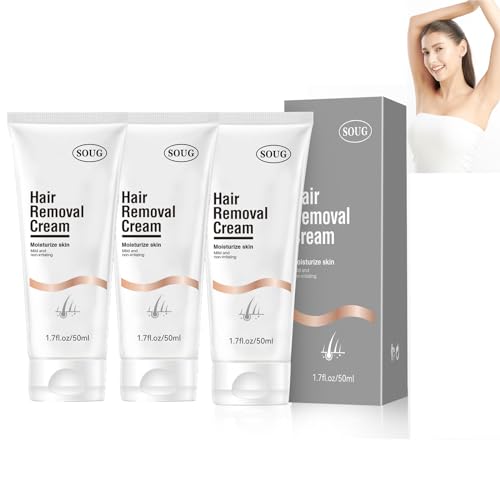Unwanted body hair is a common concern for many individuals, and the quest for smooth, hair-free skin has led to the development of various hair removal methods. From traditional techniques to modern innovations, the options are abundant, each with its own set of benefits and considerations. In this comprehensive guide, we’ll explore popular hair removal methods, discussing their effectiveness, longevity, and potential side effects.
Comparing Hair Removal Methods
Shaving
Shaving is perhaps the most common and readily accessible hair removal method. Using a razor, hair is removed at the skin’s surface, providing instant results. Shaving is painless and suitable for most areas of the body.
How it Works: Shaving is a straightforward hair removal method that involves using a razor to cut hair off at the skin’s surface. Typically, a lubricating gel or foam is applied to the area to be shaved to soften the hair and reduce friction. The razor is then glided over the skin, cutting the hair close to the surface without affecting the hair follicle.
Pros:
- Accessibility: Shaving is widely accessible and can be done at home with minimal equipment. Razors and shaving creams are readily available at most supermarkets and pharmacies.
- Speed: Shaving is a quick process, making it suitable for individuals with busy lifestyles or those looking for a fast solution to remove unwanted hair.
- Painless: Shaving is generally painless, making it an attractive option for individuals who prefer to avoid discomfort associated with other hair removal methods.
- Suitable for Most Areas: Shaving can be used on various parts of the body, including legs, underarms, and the face.
Cons:
- Short-Term Results: One of the primary drawbacks of shaving is that it provides only temporary results. Hair grows back quickly, often within a few days, leading to the need for frequent shaving to maintain smooth skin.
- Skin Irritation: Shaving can cause skin irritation, especially for individuals with sensitive skin. Razor burn, redness, and itching are common side effects, particularly if proper shaving techniques are not followed.
- Risk of Cuts: Improper shaving techniques or dull razors can result in nicks, cuts, and razor bumps, which can be painful and may increase the risk of infection.
- Stubble: Unlike methods that remove hair from the root, such as waxing or epilation, shaving only cuts hair at the skin’s surface, leading to stubble as the hair regrows. This can result in a less smooth texture compared to other hair removal methods.
Despite its drawbacks, shaving remains a popular choice for its convenience and accessibility. By using high-quality razors, moisturizing shaving creams, and proper shaving techniques, individuals can minimize irritation and achieve smooth results with this time-tested hair removal method.
Laser Hair Removal
Laser hair removal is a popular choice for those seeking more permanent results. This method uses concentrated beams of light to target and damage the hair follicles, inhibiting future hair growth. Laser hair removal is effective for most skin tones and can be performed on various body areas, including the face, legs, and bikini line. While multiple sessions are typically required for optimal results, many individuals experience long-term hair reduction with minimal discomfort.
How it Works: Laser hair removal is a medical procedure that uses concentrated beams of light to target and damage the melanin (pigment) in hair follicles. The heat generated by the laser destroys the hair follicle, inhibiting future hair growth. The procedure typically involves a series of sessions spaced several weeks apart to target hair in different growth phases effectively. Laser hair removal is most effective on individuals with light skin and dark hair, as the contrast allows the laser to precisely target the hair follicles without affecting the surrounding skin.
Pros:
- Long-Term Results: Laser hair removal offers long-lasting results, with many individuals experiencing permanent hair reduction after completing a series of sessions. While some hair may regrow over time, it is often finer and lighter in color.
- Precision: Laser technology allows for precise targeting of hair follicles, minimizing damage to surrounding skin. This makes laser hair removal suitable for delicate areas such as the face and bikini line.
- Speed: Laser hair removal can treat multiple hair follicles simultaneously, making it a faster option compared to methods like electrolysis, which target individual follicles.
- Reduced Ingrown Hairs: Unlike methods that involve pulling hair from the root, such as waxing or epilation, laser hair removal reduces the risk of ingrown hairs, as it targets the hair follicle directly.
- Convenience: Once a series of laser hair removal sessions is completed, maintenance treatments are typically needed less frequently than with other hair removal methods, saving time and effort in the long run.
Cons:
- Requires Multiple Sessions: Achieving optimal results with laser hair removal typically requires multiple sessions spaced several weeks apart. This can be time-consuming and may require a significant investment of both time and money.
- Not Suitable for All Skin Types: While advances in technology have made laser hair removal safer for individuals with darker skin tones, it may not be as effective or safe for those with very dark or tanned skin.
- Potential Side Effects: Laser hair removal can cause temporary side effects such as redness, swelling, and skin irritation immediately following treatment. In rare cases, more severe side effects such as blistering or changes in skin pigmentation may occur.
- Not Completely Permanent: While laser hair removal can result in significant hair reduction, it may not eliminate all hair permanently. Some individuals may require occasional maintenance treatments to target regrowth.
- Cost: Laser hair removal can be costly, especially when considering the need for multiple sessions to achieve desired results. However, many individuals find the long-term benefits outweigh the initial investment.
Despite its drawbacks, laser hair removal remains a popular choice for individuals seeking long-lasting hair reduction with minimal maintenance. By consulting with a qualified dermatologist or licensed practitioner and following pre-and post-treatment care instructions, individuals can safely and effectively achieve smoother, hair-free skin with laser hair removal.
Waxing
Waxing involves applying warm wax to the skin, which adheres to the hair. When the wax is pulled off, it removes the hair from the root, resulting in smoother skin that lasts longer than shaving. Waxing can be done at home or by a professional, and it’s effective for larger areas like legs, arms, and the bikini area.
How it Works: Waxing is a hair removal method that involves applying a warm wax to the skin in the direction of hair growth. The wax adheres to the hair and, as it cools and hardens, it grasps the hair firmly. A cloth or paper strip is then pressed onto the wax and quickly pulled off against the direction of hair growth, removing the hair from the root. This process leaves the skin smooth and hair-free.
Pros:
- Longer Lasting Results: Waxing removes hair from the root, leading to longer-lasting results compared to shaving. Depending on individual hair growth cycles, results can last up to several weeks.
- Softer Regrowth: As hair regrows after waxing, it often appears finer and softer than it does with shaving. This can lead to smoother skin between waxing sessions.
- Suitable for Various Areas: Waxing can be performed on most areas of the body, including the legs, arms, underarms, bikini area, and face.
- Exfoliation: In addition to removing hair, waxing also exfoliates the skin, removing dead skin cells and leaving the skin looking and feeling smoother.
- Convenience: While professional waxing services are available, waxing kits for home use are also widely available, offering convenience and flexibility.
Cons:
- Pain: Waxing can be painful, particularly for those with sensitive skin or when removing hair from sensitive areas such as the bikini line or upper lip. The sensation is often described as a quick, stinging sensation as the wax is removed.
- Risk of Irritation: Waxing can cause temporary redness, inflammation, and irritation, especially for those with sensitive skin. In some cases, individuals may experience ingrown hairs or allergic reactions to the wax or other products used during the process.
- Regrowth Required: While waxing provides longer-lasting results compared to shaving, hair will eventually grow back, necessitating regular waxing sessions to maintain smooth skin.
- Length of Hair Required: For waxing to be effective, hair needs to be a certain length (typically around 1/4 to 1/2 inch). This means individuals may need to let their hair grow out between waxing sessions, which can be inconvenient for some.
Despite its potential drawbacks, many individuals continue to choose waxing for its longer-lasting results and the smoothness it provides to the skin. With proper technique and aftercare, waxing can be an effective and relatively convenient hair removal method for various areas of the body.
Hair Removal Gel
Hair removal gels, also known as depilatory gels, offer a chemical-based alternative to traditional methods like shaving and waxing. These gels use active ingredients to break down the proteins in hair, making it easier to wipe or wash away. While providing a convenient solution, hair removal gels come with their own set of benefits and considerations.
How it Works: Hair removal gels typically contain chemical compounds such as calcium thioglycolate or potassium hydroxide. These ingredients work by disrupting the structure of the hair, breaking it down to a point where it can be easily removed from the skin. The gel is applied to the desired area, left for a specified duration, and then wiped or rinsed off, taking the unwanted hair along with it.
Pros:
- Ease of Use: Hair removal gels are user-friendly and require minimal preparation or expertise.
- Quick Results: The process is relatively quick, providing smoother skin in a short amount of time.
- Suitable for Various Areas: Gels are versatile and can be used on different body parts, including legs, arms, and the bikini area.
Cons:
- Chemical Odor: Some users may find the smell of depilatory gels unpleasant due to the chemicals involved.
- Potential Skin Sensitivity: Individuals with sensitive skin may experience irritation or allergic reactions.
- Temporary Results: Similar to shaving, the results are temporary, and hair regrowth occurs relatively quickly.
Considerations:
- Patch Test: Before widespread application, it’s advisable to perform a patch test to check for potential skin reactions.
- Follow Instructions: Adhering to the recommended application time is crucial to avoid skin irritation or adverse effects.
In conclusion, hair removal gels offer a convenient and accessible solution for those seeking an alternative to traditional methods. While providing quick results, users should be mindful of potential skin sensitivity and follow instructions carefully to ensure a positive and irritation-free experience.
Hair Removal Cream
Hair removal creams, also known as depilatory creams, have gained popularity as an effective and painless alternative to traditional methods like shaving and waxing. These creams use chemical compounds to break down the protein structure of hair, allowing for easy removal. While offering convenience, hair removal creams come with their own set of advantages and considerations.
How it Works: Hair removal creams typically contain active ingredients like calcium thioglycolate or potassium hydroxide. These chemicals work by weakening the hair structure, making it easy to wipe or rinse away. The cream is applied to the skin, left for a specified duration, and then removed along with the dissolved hair, leaving the skin smoother.
Pros:
- Painless: Hair removal creams are generally painless, making them a suitable option for those averse to the discomfort associated with waxing or other methods.
- Convenience: The application process is straightforward and can be done at home without the need for professional assistance.
- Longer-Lasting Results: Compared to shaving, the results of using hair removal creams tend to last longer, as the hair is removed at the root.
Cons:
- Chemical Odor: Some users may find the scent of depilatory creams unpleasant due to the chemical ingredients.
- Skin Sensitivity: Individuals with sensitive skin may experience irritation or allergic reactions to the chemicals in the cream.
- Not Suitable for All Areas: While versatile, some individuals may find hair removal creams unsuitable for more sensitive areas or areas with thicker hair growth.
Considerations:
- Patch Test: It’s recommended to perform a patch test before widespread application to check for potential skin reactions.
- Follow Instructions: Adhering to the recommended application time is crucial to avoid skin irritation or adverse effects.
In conclusion, hair removal creams offer a convenient and painless option for achieving smooth skin. While effective, users should be aware of potential skin sensitivity and follow instructions diligently to ensure a positive and irritation-free experience.
Epilation
Epilation involves using an electric device to remove hair from the root. This method is similar to waxing but uses mechanical tweezers to grasp and pull out multiple hairs simultaneously. Epilators are convenient for home use and can provide longer-lasting results compared to shaving or depilatory creams.
How it Works: Epilation is a hair removal method that involves using an electric device called an epilator. Epilators have multiple rotating tweezers that grasp and pull out hair from the root as the device is moved across the skin. Unlike shaving, which cuts hair at the skin’s surface, epilation removes hair from the root, resulting in smoother skin that lasts longer.
Pros:
- Longer Lasting Results: Similar to waxing, epilation removes hair from the root, leading to longer-lasting results compared to shaving. Depending on individual hair growth cycles, results can last up to several weeks.
- Convenience: Epilators are available for home use, offering convenience and flexibility. There’s no need for messy wax or shaving creams, and epilation can be done quickly and easily in the comfort of your own home.
- Suitable for Various Areas: Epilators can be used on various parts of the body, including the legs, arms, underarms, and bikini area.
- Finer Regrowth: With regular use, some individuals find that hair regrowth after epilation appears finer and softer, similar to the results seen with waxing.
- Exfoliation: Like waxing, epilation also provides exfoliation benefits, removing dead skin cells and leaving the skin feeling smoother.
Cons:
- Discomfort: Epilation can be uncomfortable, particularly for those new to the method or when used on sensitive areas of the body. The sensation is often described as a pulling or pinching feeling as the hairs are removed from the root.
- Redness and Irritation: Some individuals may experience temporary redness, inflammation, or irritation after epilation, especially if they have sensitive skin or are using the device for the first time.
- Risk of Ingrown Hairs: As with other hair removal methods, there is a risk of developing ingrown hairs after epilation. Proper exfoliation and skincare routines can help minimize this risk.
- Regrowth Required: While epilation provides longer-lasting results compared to shaving, hair will eventually grow back, necessitating regular use of the epilator to maintain smooth skin.
- Initial Cost: The initial cost of purchasing an epilator may be higher than that of disposable razors or waxing kits. However, over time, the cost per use may be lower compared to other hair removal methods.
Despite the potential discomfort and initial cost, many individuals choose epilation for its longer-lasting results and convenience. With regular use and proper aftercare, epilation can be an effective hair removal method for achieving smooth, hair-free skin.
Electrolysis
Electrolysis is the only FDA-approved method for permanent hair removal. During electrolysis treatments, a small probe is inserted into each hair follicle, delivering an electric current to destroy the hair root. Electrolysis is suitable for all skin and hair types and can be used on any body area. While it offers permanent results, electrolysis can be time-consuming and may cause discomfort or skin irritation.
How it Works: Electrolysis is a hair removal method that uses a small probe, typically a thin metal wire, to deliver an electric current directly to the hair follicle. This electric current destroys the hair follicle’s ability to produce new hair, leading to permanent hair removal over time. The probe is inserted into the hair follicle, and the electric current is applied, usually in short bursts. Over multiple sessions, electrolysis can effectively eliminate unwanted hair.
Pros:
- Permanent Results: Electrolysis is the only FDA-approved method for permanent hair removal. By destroying the hair follicle, electrolysis prevents future hair growth in the treated area.
- Suitable for All Hair Types and Colors: Unlike laser hair removal, which works best on individuals with light skin and dark hair, electrolysis can be used on all skin tones and hair colors.
- Precision: Electrolysis targets each hair follicle individually, allowing for precise and customized treatment. This makes electrolysis suitable for small or delicate areas, such as the eyebrows or upper lip.
- Versatility: Electrolysis can be used on various parts of the body, including the face, arms, legs, and bikini area.
- Minimal Side Effects: While temporary redness or swelling may occur after electrolysis, serious side effects are rare when the procedure is performed by a trained professional using sterile equipment.
Cons:
- Time-Consuming: Electrolysis is a time-consuming process, as each hair follicle must be treated individually. Multiple sessions are typically required to achieve permanent results, with sessions ranging from several minutes to over an hour, depending on the size of the area being treated.
- Discomfort: Electrolysis can be uncomfortable, as it involves inserting a probe into each hair follicle and delivering an electric current. The sensation is often described as a stinging or pricking feeling.
- Cost: Electrolysis can be costly, especially when multiple sessions are required for complete hair removal. The cost per session varies depending on factors such as the size of the treatment area and the expertise of the practitioner.
- Risk of Skin Damage: In rare cases, electrolysis can cause scarring, changes in skin pigmentation, or other skin damage if not performed correctly. It’s essential to choose a qualified and experienced electrologist to minimize these risks.
- Not Suitable for Large Areas: Due to its time-consuming nature, electrolysis may not be practical for treating large areas of the body, such as the legs or back.
Despite its drawbacks, electrolysis remains a popular choice for individuals seeking permanent hair removal. With patience and commitment to multiple sessions, electrolysis can provide long-lasting results and freedom from unwanted hair. It’s essential to consult with a qualified electrologist to determine if electrolysis is the right option for your needs and to ensure safe and effective treatment.
Sugaring
Sugaring is a natural hair removal method that involves using a sticky paste made from sugar, water, and lemon juice to remove hair. Similar to waxing, the sugaring paste is applied to the skin and pulled off, removing the hair from the root. Sugaring is gentle on the skin and less painful than waxing for some individuals. While it provides temporary hair removal, regular sugaring sessions can lead to finer regrowth over time.
How it Works: Sugaring is a natural hair removal method that involves using a sticky paste made from sugar, water, and lemon juice to remove hair. The sugaring paste is typically warmed to a lukewarm temperature and applied to the skin in the opposite direction of hair growth. After allowing the paste to adhere to the hair, it is quickly pulled off in the direction of hair growth, removing the hair from the root. This process leaves the skin smooth and hair-free.
Pros:
- Natural Ingredients: Sugaring paste is made from simple, natural ingredients, making it a gentle option for individuals with sensitive skin or allergies. The absence of harsh chemicals reduces the risk of irritation or allergic reactions.
- Less Painful: Many individuals find sugaring to be less painful than traditional waxing, as the sugaring paste adheres primarily to the hair rather than the skin. This can result in a gentler hair removal experience, especially for those with sensitive skin.
- Exfoliation: Similar to waxing, sugaring also provides exfoliation benefits, removing dead skin cells and leaving the skin feeling smooth and soft.
- Effective on Short Hair: Unlike waxing, which requires hair to be a certain length for effective removal, sugaring can effectively remove shorter hair, making it suitable for maintaining smooth skin between sessions.
- Ease of Cleanup: Sugaring paste is water-soluble, making it easy to clean up any residue with warm water, unlike wax, which may require additional products for removal.
Cons:
- Sticky Consistency: Some individuals may find the sticky consistency of sugaring paste messy or uncomfortable to work with, particularly if it adheres to the skin or clothing during the hair removal process.
- Skill Required: Achieving the right consistency of sugaring paste and mastering the technique of applying and removing it effectively may require practice and skill. Beginners may experience difficulty achieving optimal results.
- Limited Availability: While sugaring paste can be made at home using simple ingredients, ready-to-use sugaring products may be less readily available than traditional waxing products in some areas.
- Potential for Breakage: In some cases, sugaring may lead to hair breakage rather than complete removal from the root, particularly if the paste is not applied and removed properly. This can result in faster regrowth and a less smooth finish.
Despite its potential drawbacks, sugaring offers a natural and effective hair removal option for those seeking smoother, hair-free skin. With practice and proper technique, individuals can achieve satisfying results with minimal risk of irritation or discomfort.
Making Hair Removal Cream at Home
Creating your own hair removal cream at home can be a cost-effective and natural alternative, offering the satisfaction of knowing exactly what goes into your skincare routine. Here’s a simple recipe using natural ingredients commonly found in many households:
Ingredients:
- 2 tablespoons of turmeric powder
- 1 tablespoon of gram flour
- 3 tablespoons of yogurt
Instructions:
1. Mixing the Ingredients: In a mixing bowl, combine the turmeric powder, gram flour, and yogurt. Stir the ingredients thoroughly until you achieve a smooth and consistent paste. Adjust the quantities as needed to achieve the desired texture.
2. Application: Apply the homemade hair removal cream to the area where you wish to remove hair. Ensure that the hair is completely covered with an even layer of the paste.
3. Wait Time: Allow the cream to sit on your skin for approximately 20-30 minutes. This gives the natural ingredients time to penetrate the hair and weaken its structure.
4. Removal: Once the paste has dried, gently rub it against the direction of hair growth. The dried paste will help in effectively removing the hair along with it.
Advantages of Homemade Hair Removal Cream:
Natural Ingredients: The use of turmeric, gram flour, and yogurt ensures that your homemade cream is free from harsh chemicals, making it suitable for individuals with sensitive skin. Turmeric is known for its anti-inflammatory properties, gram flour helps exfoliate, and yogurt provides a soothing effect.
Cost-Effective: The ingredients are affordable and commonly available, making this homemade solution a budget-friendly option compared to commercial hair removal creams.
Ease of Preparation: Making the cream at home is a straightforward process that doesn’t require specialized skills or equipment. Most households already have these ingredients in their kitchens.
Considerations:
Skin Sensitivity: Even though the ingredients are natural, it’s essential to perform a patch test before applying the cream to larger areas to ensure there are no allergic reactions or skin sensitivities.
Consistency: Achieving the right consistency of the paste is crucial for effective hair removal. You may need to adjust the quantities of ingredients to create a smooth and spreadable mixture.
Conclusion:
Crafting your own hair removal cream at home provides a natural and customizable alternative to commercial products. While results may vary from person to person, this DIY approach allows you to experiment with natural ingredients and discover a solution that aligns with your skin’s needs, all while embracing a more organic and sustainable beauty routine.
Conclusion
With a plethora of hair removal methods available, finding the right one for your needs depends on factors such as desired results, pain tolerance, and budget. Whether you prefer the convenience of shaving, the long-lasting results of laser hair removal, or the permanence of electrolysis, there’s a hair removal method suited to your preferences. Before trying any new hair removal technique, it’s essential to consider potential side effects and consult with a dermatologist if you have any concerns. Ultimately, achieving smooth, hair-free skin is possible with the right approach and proper care.
[As an Amazon Associate, I earn from qualifying purchases at no additional cost to you.]






























































